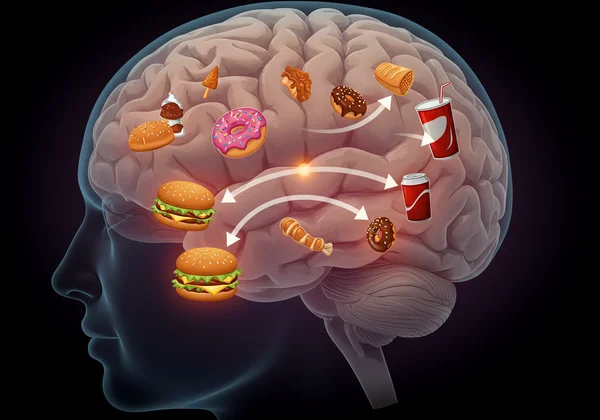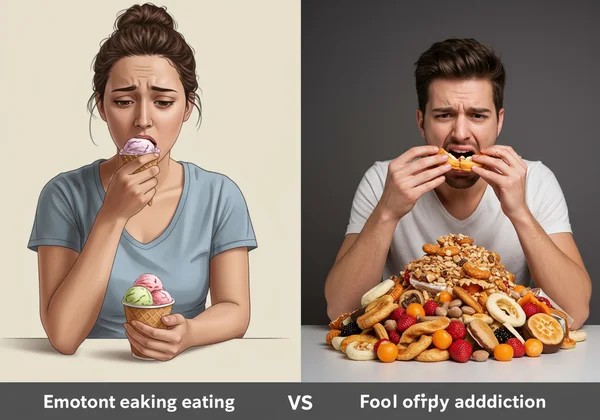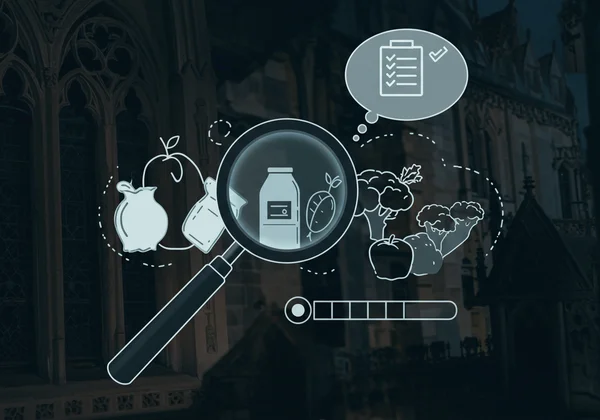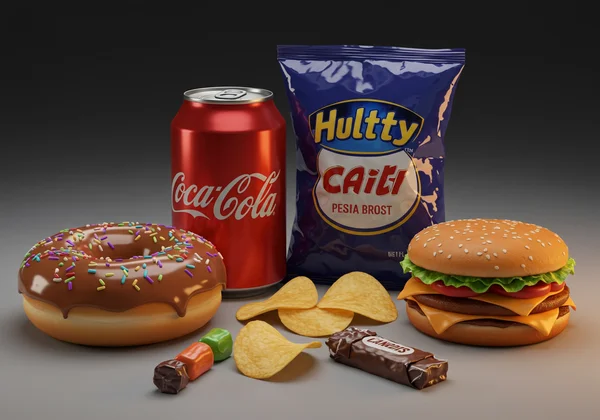Voedselverslaving Test: Yale Schaal & Tekenen van Suikerverslaving
Voel je je machteloos over bepaalde voedingsmiddelen? Lijkt de gedachte om minder suiker of bewerkte snacks te eten onmogelijk? Je bent niet de enige. Veel mensen worstelen met intense hunkeringen en een gevoel van controleverlies rond eten, en vragen zich vaak af: Heb ik een voedselverslaving? Dit gaat niet alleen over wilskracht; het gaat over complexe hersenchemie en gedragspatronen die net zo dwingend kunnen aanvoelen als elke andere afhankelijkheid.
Deze gids neemt je mee door het concept van voedselverslaving, helpt je het te onderscheiden van emotioneel eten en legt de wetenschap uit achter krachtige hulpmiddelen zoals de Yale Food Addiction Scale. Het begrijpen van de tekenen is de eerste moedige stap naar het herwinnen van controle. Voor een voorlopig, vertrouwelijk inzicht in je eigen gewoonten, kun je je beoordeling starten op ons platform.
Wat is voedselverslaving? Het concept begrijpen
Voedselverslaving is een gedragsverslaving die wordt gekenmerkt door de dwangmatige consumptie van zeer smakelijke voedingsmiddelen – die rijk zijn aan suiker, vet en zout – ondanks negatieve gevolgen. Vergelijkbaar met stoornissen in het gebruik van middelen, omvat het het beloningssysteem van de hersenen, wat leidt tot intense hunkeringen, verlies van controle en een onvermogen om te stoppen, zelfs als je dat wilt.
Voorbij hunkeringen: wanneer eten dwangmatig wordt
Iedereen ervaart voedselhunkeringen. Bij voedselverslaving escaleren deze hunkeringen echter tot een overweldigende obsessie. Dit gaat veel verder dan genieten van een traktatie; het omvat een cyclus van intense drang, eetbuien en daaropvolgende gevoelens van schuld of schaamte. Dit dwangmatig eetgedrag houdt vaak aan ondanks gezondheidsproblemen, emotionele nood of een verlangen om te veranderen, wat een belangrijk kenmerk van verslaving is.
De wetenschap achter voedselverslaving: hersenchemie
De wetenschap achter voedselverslaving wijst op de beloningscircuits van de hersenen. Wanneer je hyper-smakelijke voedingsmiddelen consumeert, geeft je hersenen dopamine af, een neurotransmitter die geassocieerd wordt met plezier en beloning. Bij sommige individuen kan deze respons disfunctioneel worden. De hersenen beginnen meer van deze voedingsmiddelen te eisen om hetzelfde niveau van plezier te bereiken, wat leidt tot tolerantie en ontwenningsverschijnselen, zoals prikkelbaarheid of angst, wanneer de consumptie wordt gestopt.

Emotioneel eten versus voedselverslaving: belangrijke verschillen
Het is cruciaal om voedselverslaving te onderscheiden van emotioneel eten, aangezien ze verschillende benaderingen vereisen. Hoewel beide het gebruik van voedsel om gevoelens te verwerken inhouden, verschillen hun onderliggende patronen en ernst aanzienlijk. Het begrijpen van deze verschillen kan je helpen je eigen uitdagingen beter te identificeren. Een geweldige manier om dit proces te starten is door een gratis screeningquiz op ons platform te doen.
Patronen herkennen: comfort, stress of verslaving?
Emotioneel eten is doorgaans een reactie op specifieke gevoelens zoals stress, verdriet of verveling. Je grijpt misschien naar ijs na een slechte dag voor comfort. Voedselverslaving is echter minder gericht op een specifieke trigger en meer op een aanhoudende, dwangmatige drang die niet afneemt zodra de emotie voorbij is. De hunkering voelt constant aan en is vaak gericht op een specifiek voedingsmiddel, ongeacht je emotionele toestand.
Impact op het dagelijks leven: een cruciaal onderscheid
Hoewel emotioneel eten kan leiden tot spijt, veroorzaakt voedselverslaving vaak aanzienlijke verstoring van het dagelijks leven. Dit kan inhouden dat je eetgedrag verbergt voor dierbaren, buitensporige hoeveelheden geld uitgeeft aan bepaalde voedingsmiddelen en sociale situaties vermijdt om het gedrag voort te zetten. Het belangrijkste verschil ligt in de mate van functionele beperking en het gevoel volledig gecontroleerd te worden door het voedsel.

De Yale Food Addiction Scale (YFAS) uitgelegd
Om verslavingsachtig eetgedrag te helpen identificeren, ontwikkelden onderzoekers van Yale University de Yale Food Addiction Scale (YFAS). Dit wetenschappelijk gevalideerde instrument is een van de meest gerespecteerde metingen in het veld. Het past de diagnostische criteria voor stoornissen in het gebruik van middelen toe op eetgedrag, en biedt een gestandaardiseerde manier om de potentiële tekenen van voedselverslaving te beoordelen. Je kunt een versie van deze schaal verkennen met onze online verslavingstest.
Hoe de YFAS verslavingsachtig eetgedrag meet
De YFAS stelt vragen met betrekking tot specifieke symptomen van verslaving die de afgelopen 12 maanden zijn ervaren. Deze omvatten verlies van controle over de consumptie, aanhoudende drang of mislukte pogingen om te minderen, voortgezet gebruik ondanks negatieve gevolgen en het ervaren van ontwenningsverschijnselen bij het minderen van bepaalde voedingsmiddelen. Het meet de aanwezigheid en ernst van deze verslavingsachtige eetpatronen.
Wat je YFAS-score betekent
Je score op de Yale Food Addiction Scale geeft aan of je eetgedrag overeenkomt met de klinische criteria voor een verslaving. Het is geen medische diagnose, maar een krachtig screeningsinstrument dat een duidelijk beeld geeft van je relatie met voedsel. Een hogere score suggereert dat je eetpatronen significante tekenen van verslavende eigenschappen vertonen, wat aangeeft dat het nuttig kan zijn om verdere professionele begeleiding te zoeken. Voor een volledig anonieme evaluatie, onze gratis tool proberen.

Veelvoorkomende tekenen en symptomen: heb je een suikerverslaving?
Het herkennen van de tekenen van voedselverslaving is de eerste stap naar verandering. Veel van deze symptomen overlappen met wat mensen gewoonlijk "suikerverslaving" noemen, aangezien suikerrijke voedingsmiddelen vaak de belangrijkste drijfveer zijn van dit dwangmatige gedrag. Een online suikerverslavingstest kan waardevolle eerste inzichten bieden.
Verslavend gedrag met voedsel identificeren
Overweeg of een van de volgende gedragingen bij jou resoneert:
- Verlies van controle: Meer eten van bepaalde voedingsmiddelen dan je van plan was.
- Aanhoudende hunkeringen: Veel tijd besteden aan het voelen van hunkeringen of het herstellen van overeten.
- Voortgezet gebruik ondanks schade: Op een bepaalde manier blijven eten, zelfs als het je fysieke of emotionele problemen bezorgt.
- Verwaarloosde activiteiten: Belangrijke sociale, beroepsmatige of recreatieve activiteiten opgeven vanwege je eetgewoonten.
- Tolerantie: Steeds meer van het voedsel nodig hebben om het gewenste gevoel te krijgen.
- Ontwenning: Symptomen ervaren zoals prikkelbaarheid, hoofdpijn of angst wanneer je mindert.
De rol van suiker en zeer smakelijke voedingsmiddelen
Suiker en andere sterk bewerkte voedingsmiddelen zijn zo ontworpen dat ze intens belonend zijn. Hun combinatie van vet, zout en suiker kan het beloningssysteem van de hersenen effectiever kapen dan natuurlijke voedingsmiddelen. Dit is de reden waarom veel mensen vastzitten in een cyclus met specifieke items zoals frisdrank, snoep of fastfood, aangezien deze zeer smakelijke voedingsmiddelen een krachtige biologische drang creëren voor meer.

De volgende stap zetten: jouw reis naar voedselvrijheid
Het begrijpen van je relatie met voedsel is een moedige en empowerende reis. Het herkennen van de tekenen van voedselverslaving gaat niet over schaamte of schuld; het gaat over het verkrijgen van de duidelijkheid die nodig is om zinvolle veranderingen aan te brengen. De patronen kunnen overweldigend aanvoelen, maar kennis is je eerste en krachtigste hulpmiddel. Je kunt deze reis vandaag, nu, beginnen met een eenvoudige stap.
Als dit artikel bij je heeft geresoneerd, overweeg dan om onze vertrouwelijke en gratis voedselverslavingstest te doen. Deze is gebaseerd op de Yale Food Addiction Scale en is ontworpen om je onmiddellijk, privé inzicht te geven in je eetgedrag. Dit is geen diagnose, maar het is een essentiële eerste stap naar begrip en uiteindelijk het bereiken van voedselvrijheid. Ontdek je resultaten en begin vandaag nog je pad naar een gezondere relatie met voedsel.
Veelgestelde vragen
Is suikerverslaving echt?
Hoewel "suikerverslaving" geen officiële klinische diagnose is in de DSM-5, toont onderzoek aan dat suiker het beloningssysteem van de hersenen kan beïnvloeden op een manier die vergelijkbaar is met verslavende middelen. Veel experts zijn het erover eens dat de dwangmatige consumptiepatronen die geassocieerd worden met suiker overeenkomen met de gedragsmatige definitie van verslaving, waardoor een suikerverslavingstest een nuttig zelfbeoordelingsinstrument is.
Wat zijn de veelvoorkomende tekenen van voedselverslaving?
De meest voorkomende tekenen zijn intense hunkeringen naar specifieke voedingsmiddelen, meer eten dan de bedoeling was, blijven eten ondanks negatieve gevolgen (zoals gewichtstoename of gezondheidsproblemen), en ontwenningsverschijnselen zoals prikkelbaarheid ervaren wanneer je probeert te minderen. Als je je afvraagt over je eigen patronen, kan een vertrouwelijke quiz duidelijkheid verschaffen.
Hoe verschilt voedselverslaving van overeten?
Overeten kan incidenteel zijn en is vaak situationeel. Voedselverslaving omvat een dwangmatige, neurologische drang die veel moeilijker te controleren is. Een belangrijk verschil is het element "verlies van controle" en de aanwezigheid van tolerantie en ontwenning, die kenmerken zijn van verslaving die doorgaans niet worden gezien bij eenvoudig overeten.
Kan de Yale Food Addiction Scale mij diagnosticeren?
Nee, de Yale Food Addiction Scale is een screeningsinstrument, geen diagnostisch instrument. Het is ontworpen om jou en zorgverleners te helpen eetpatronen te identificeren die consistent zijn met een gedragsverslaving. Voor een formele diagnose is het essentieel om een gekwalificeerde zorgverlener of geestelijke gezondheidsprofessional te raadplegen. Onze gratis beoordelingstool is ontworpen als een veilige en vertrouwelijke eerste stap in dit proces.